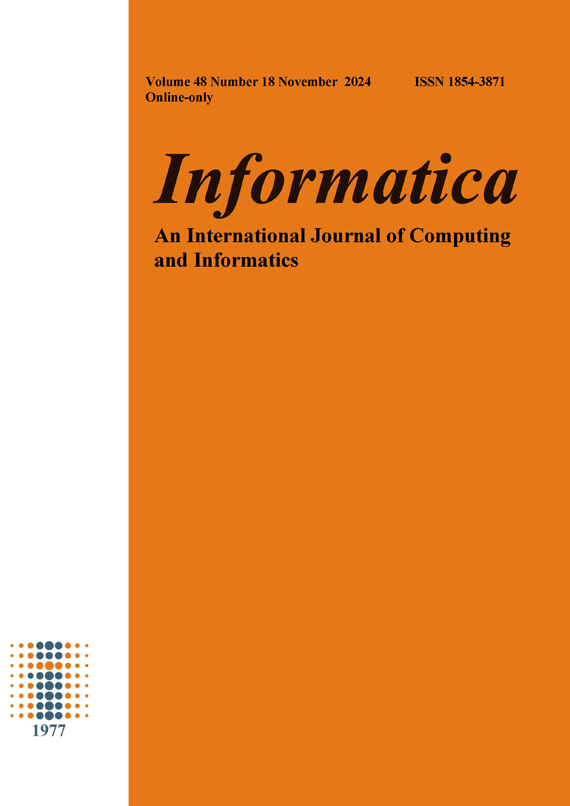Secure Face Recognition Using Fully Homomorphic Encryption and Convolutional Neural Networks
DOI:
https://doi.org/10.31449/inf.v48i18.6396Abstract
As a unique physiological characteristic, facial information is considered privacy information. This paper combines fully homomorphic encryption technology with a convolutional neural network (CNN) algorithm to develop a face recognition system. The CNN used for extracting facial features was a conventional structure of an CNN, consisting of input layer, convolutional layer, pooling layer, and output layer. The only difference is that during training, triplet samples are used. The differences in convolutional features between the triplet samples were directly utilized as the loss function to train the algorithm. The trained CNN used the convolutional features as facial features. The facial feature vector was encrypted using fully homomorphic encryption technology. Then, the ciphertext was directly used for matching operations to achieve face recognition under encrypted conditions. Finally, simulation experiments were carried out. The simulation experiment used facial data from the Public Figures Face Database. The experiment tested the impact of encryption parameters on encryption effectiveness, as well as the matching performance and security of the face recognition system. The results showed that a high polynomial modulus combined with a low ciphertext coefficient modulus in the encryption parameters led to a decline in both recognition accuracy and efficiency of face recognition. When the ciphertext coefficient modulus was 256 and the polynomial modulus was 1,024, the performance of the system based on fully homomorphic encryption was optimal, achieving a recognition accuracy of 97.7% and an efficiency of 3.34 faces per second. When the matching threshold was 0.8, the recognition accuracy of the system under full-homomorphic encryption was the highest (98.7%). Under the same matching threshold, the recognition efficiency of the system under fully homomorphic encryption was higher than that of the traditional encryption (3.21 per second). In the face of third-party attacks, the face recognition system with fully homomorphic encryption realized the recognition and matching of face feature vectors without exposing plaintext.
Downloads
Published
Issue
Section
License
I assign to Informatica, An International Journal of Computing and Informatics ("Journal") the copyright in the manuscript identified above and any additional material (figures, tables, illustrations, software or other information intended for publication) submitted as part of or as a supplement to the manuscript ("Paper") in all forms and media throughout the world, in all languages, for the full term of copyright, effective when and if the article is accepted for publication. This transfer includes the right to reproduce and/or to distribute the Paper to other journals or digital libraries in electronic and online forms and systems.
I understand that I retain the rights to use the pre-prints, off-prints, accepted manuscript and published journal Paper for personal use, scholarly purposes and internal institutional use.
In certain cases, I can ask for retaining the publishing rights of the Paper. The Journal can permit or deny the request for publishing rights, to which I fully agree.
I declare that the submitted Paper is original, has been written by the stated authors and has not been published elsewhere nor is currently being considered for publication by any other journal and will not be submitted for such review while under review by this Journal. The Paper contains no material that violates proprietary rights of any other person or entity. I have obtained written permission from copyright owners for any excerpts from copyrighted works that are included and have credited the sources in my article. I have informed the co-author(s) of the terms of this publishing agreement.
Copyright © Slovenian Society Informatika








